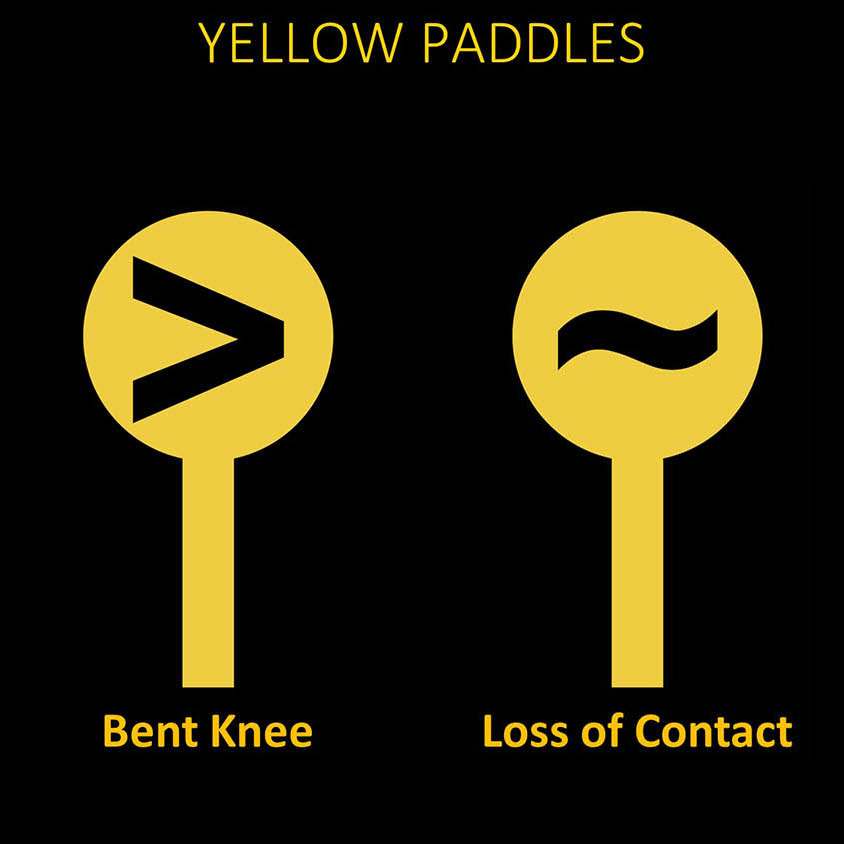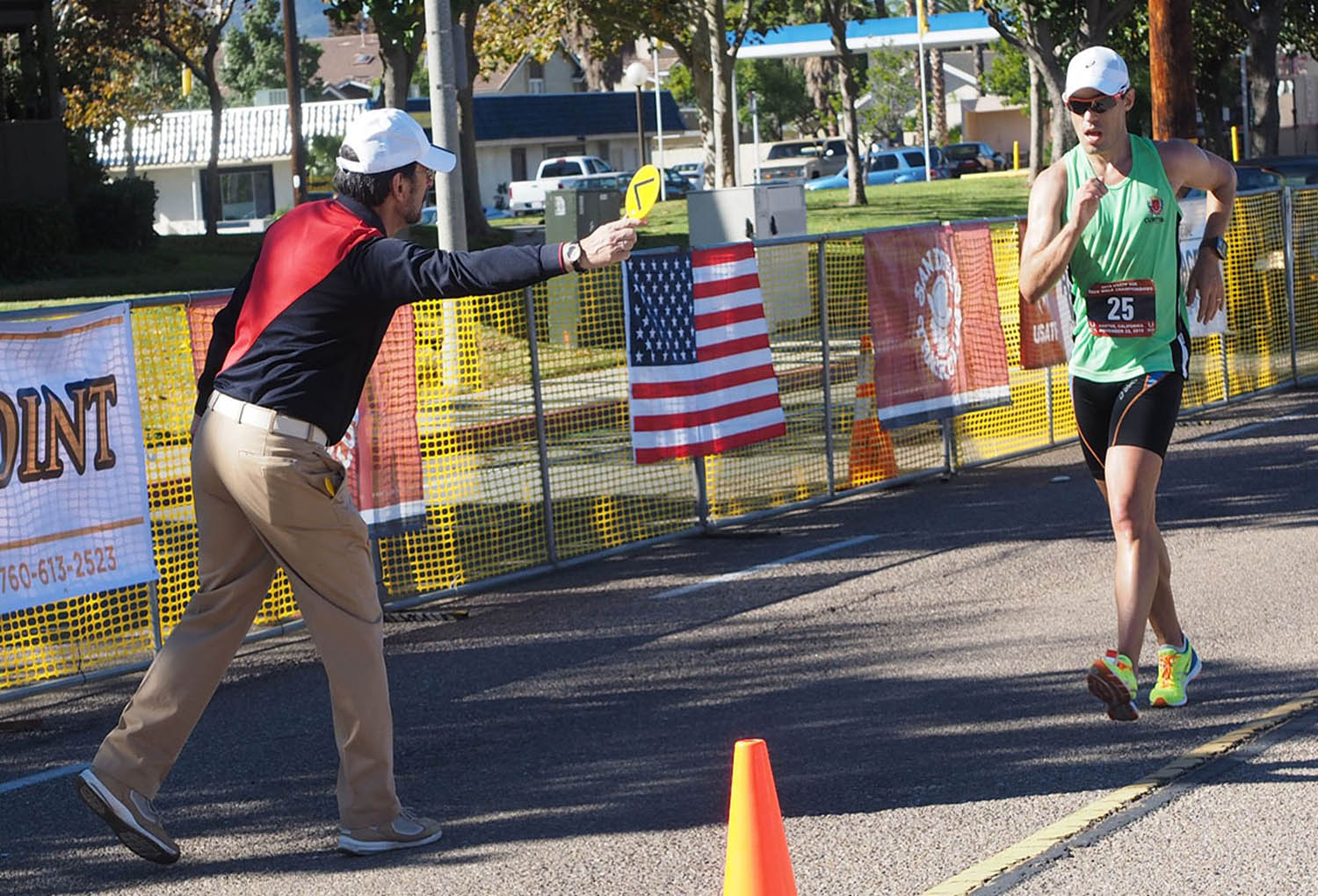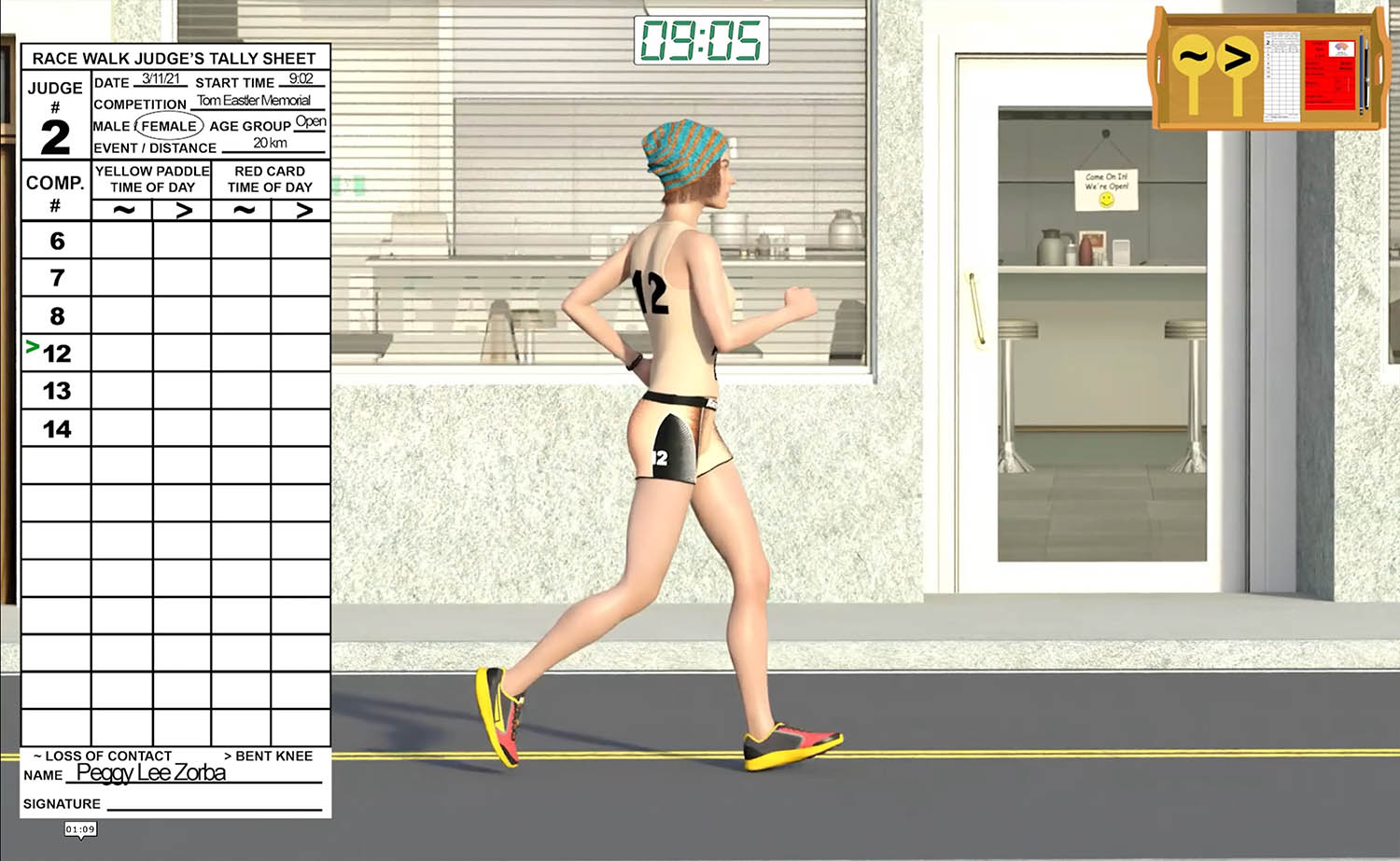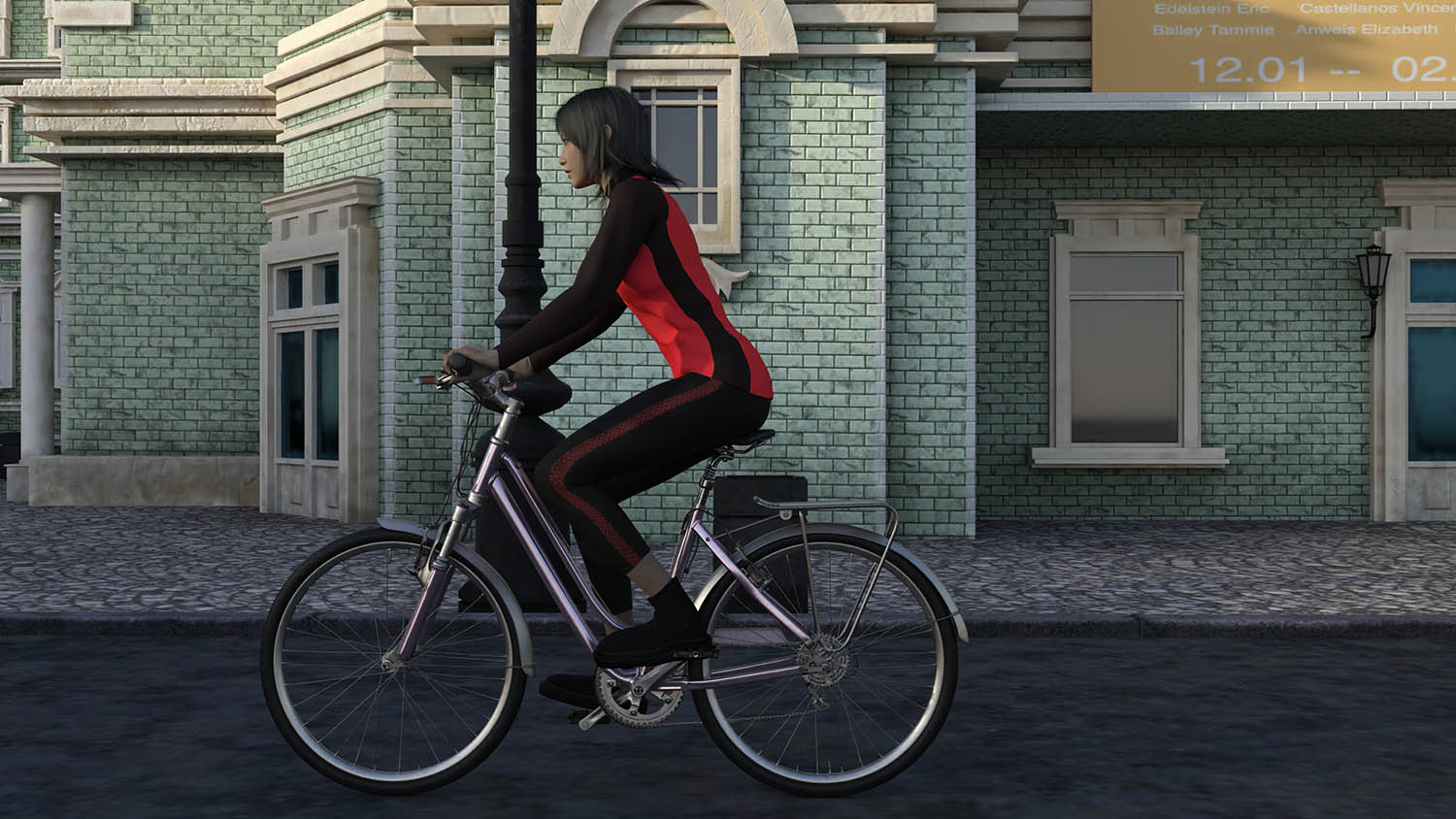How to Become a Race Walking Official - Tools of the Trade
Watch the Entire Page as a Video
In addition to a pen or pencil and a watch synchronized with the those of the judging panel, race walk judges have specialized tools. They have a Tally Sheet to record their judging calls, Yellow Paddles to caution a walker, and a stack of Red Cards to propose disqualification.

They have two yellow paddles: one paddle with the symbol for bent knees on both sides and a second with the symbol for loss of contact on both sides. Judges now use two separate yellow paddles to avoid confusion when they show a yellow paddle to a walker. Previously, judges had a single yellow paddle with loss of contact on one side and bent knee on the other. When a judge held it up and showed the loss of contact side to the athlete, spectators and the media might have seen the opposite side and thought the call was for bent knee.
Giving a Yellow Paddle
The judge gives a yellow paddle when an athlete is in danger of violating either clause of the race walking definition. A judge shows an athlete the yellow paddle as a caution to give them an opportunity to correct their technique. The judge may show each paddle only once to an athlete. So, they may caution walkers for both loss of contact and then for bent knee, but only one time each.

Here's a judge showing a walker a yellow paddle. As he steps towards the athlete, the judge makes eye contact with the athlete, and in effect “sticks the paddle in the walker’s face” to show it to them. When showing a yellow paddle and making eye contact, point the paddle towards the walker and then show the infraction. You might get a response where the walker nods their head as if to say “Yes, I got it.” If you think you haven't gotten the walker's attention, you can also yell out their number, but if you're judging an international competition, you might get people who don't speak English. So, that's why we really shouldn't be doing anything other than showing the paddle. After showing the paddle, record the appropriate information on the tally sheet (explained later).
Red Cards
If a judge concludes that the athlete is failing to comply with the definition, that there is visible loss of contact or visible bent knee, the judge should issue a red card to the athlete. You can see that there are two symbols on the red card, one for each infraction. Indicate which by checking off or placing an X over the symbol. Fill in the time of the infraction, the competitor's bib number, and if your judge's number isn't already on the card, fill that in too. In the United States, cards are usually printed with the judge’s number on it. Of course, make sure you, sign the card and record the information on the tally sheet (explained later).
Once a judge writes a red card to propose disqualification on an athlete, consider that athlete “no longer in the race.” Other proposals for disqualification will have to come from other members of the judging panel for a disqualification to take place. With this, keep in mind you cannot write a second red card on the same competitor. If you have already written a red card for loss of contact, don’t mess up things by writing an additional card.

It is preferable for a judge to give a yellow paddle before giving walkers a red card proposal for disqualification. There are a few exceptions to this. If it is late in the race and it is the last time you will see the walker, and the walker is not in compliance with the definition of race walking, you may go straight to a red card. If you conclude the walker flagrantly disregarding the definition of race walking, which sometimes happens at the start of a race, the judge should show the walker in violation a yellow paddle, to caution them so they have a chance to correct and at the same time, write a red card because it was obvious the walker was flagrantly in violation. Someone outright running should be strongly sanctioned. Perhaps they will heed the yellow paddle and correct. Perhaps not. The record will show they were in violation.

RED PADDLE
The Chief Judge and the Chief Judge’s Assistant (if used in the competition) have Red Paddles to notify walkers that they have been disqualified. The Chief Judge, will be informed by the recorder that a walker has be disqualified from the race. Disqualification occurs when the final red card was written, not when they are notified. After verifying the three red cards from separate judges (or four if a penalty zone is used) the Chief Judge or Chief Judge’s Assistant will tell the DQ’d walker that they must leave the race, or if after finishing, that they were disqualified. The time of notice must be sent to the recorder for inclusion on the race Summary Sheet.

TALLY SHEETS
Race Walk Judges are also equipped with Tally Sheets to keep records of their judging decisions; the time when they show yellow paddles and the time they write red cards proposing disqualification. It is important for the judge to keep an accurate record of their decisions, that way they will not make an error by giving a second yellow paddle for the same infraction or turn in a second red card on a walker. A more detailed lesson follows in this web page on how to fill out a Tally Sheet as the race walk judge makes decisions during a simulated race.

Card Collector on a Bicycle
The red cards are picked up by a card runner, who may be on a bicycle as in this picture, or they may walk quickly or jog with red cards from the judge to the recorder. Sometime electronic systems are used to “deliver” the cards to the recorder. If so, the physical red card must still be delivered to the recorder by the card runner to be part of the official record.

SUMMARY SHEET & PENALTY ZONE PAPERWORK
To complete the tools of the trade needed to conduct a race walk competition, the Recorder has a Summary Sheet to keep a “history” of the competition. The Recorder will log in all red cards and notification of disqualifications, as well as when walkers go to the Penalty Zone (if used) during the race. The Penalty Zone Operator has forms and additional equipment to operate the zone. At the conclusion of the race, the Recorder will receive all of the judge’s tally sheets and by entering Yellow Paddles and cross-checking red cards, complete the history of the event. Separate lessons about how to fill out a summary sheet and how to operate the Penalty Zone are available.
Next Lesson: Judge Viewing Area